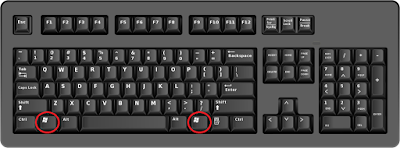Help To Remove Exp.CVE-2018-4910 from Windows 8
Error caused by Exp.CVE-2018-4910 0x80242007 WU_E_UH_INSTALLERHUNG An operation could not be completed because the installer exceeded the time limit., 0x0000006D, 0x0000007F, 0x00000005, 0x000000FD, 0x8024C007 WU_E_DRV_NO_PRINTER_CONTENT Information required for the synchronization of applicable printers is missing., 0x8024D00E WU_E_SETUP_REBOOTREQUIRED Windows Update Agent setup package requires a reboot to complete installation., 0xf0816 CBS_E_DPX_JOB_STATE_SAVED job state for DPX has been saved, 0x8024DFFF WU_E_SETUP_UNEXPECTED Windows Update Agent could not be updated because of an error not covered by another WU_E_SETUP_* error code. , 0x80240040 WU_E_NO_SERVER_CORE_SUPPORT WUA API method does not run on Server Core installation., 0x0000008BUninstall Exp.CVE-2018-4910 From PC In Few Simple Clicks
Exp.CVE-2018-4910 is another type of PC virus which is a malicious program gets installed automatically on your PC without asking your permission. It inserts its harmful code into the registry entry and changes it for its automatic execution. It infects the data stored on PC including pictures, music, videos, files and documents. There are various methods by which it can enter your PC like drive-by download or free downloads, spam emails, clicking on malicious ads or pop-ups, visiting suspicious ads, etcetera.
When Exp.CVE-2018-4910 enters your PC, it starts to create havoc inside the PC. It at first disturbs the functioning of the PC by altering its internal settings. This perilous virus may change the desktop icons and creates new icons. Also, it allows hackers to remotely access the PC. Hence, it is not good at all to allow this malware to remain inside the PC for longer time.
Method 1 : Deletion of Exp.CVE-2018-4910 From Chrome
Method 2 : Effective Way To Open PC In Safe Mode
Method 3 : Deletion of Exp.CVE-2018-4910 From Control Panel
Method 4 : Uninstall Exp.CVE-2018-4910 From Task Manager
Method 5 : Deletion of Exp.CVE-2018-4910 From Registry Entry
Easy And Complete Deletion Of Exp.CVE-2018-4910 From PC
Method 1 : Deletion of Exp.CVE-2018-4910 From Chrome
Uninstall Exp.CVE-2018-4910 From Google Chrome
- At first, you need to open your Google Chrome browser.
- To open Chrome menu, click on gear icon present at the top right corner of browser.
- Click on Tools then goto Extension tab.
- Under Extension tab, select all unwanted extension related to Exp.CVE-2018-4910.
- Finally, click on trash bin icon to Uninstall this virus from Google Chrome.

Uninstall Exp.CVE-2018-4910 From Internet Explorer
- Click on gear icon present at the right-top corner of the browser or press Alt+T keys to open menu.
- Click on Manage Add-ons and goto Toolbars and Extensions tab..
- Locate all the unwanted add-ons related to Exp.CVE-2018-4910.
- Click on Disable button.
- Now, click More information button.
- Finally, click on Uninstall button to Uninstall the virus.

Uninstall Exp.CVE-2018-4910 From Mozilla Firefox
- Open Mozilla browser and click on the menu button at the top right corner of the browser.
- Click Add-ons -> Add-ons Manager tab.
- Select Extensions or Appearance panel.
- Find Exp.CVE-2018-4910 add-ons you want to Uninstall.
- Click the Uninstall button then restart your PC.

Uninstall Exp.CVE-2018-4910 From Microsoft Edge
- Click on More (...) icon at the top right corner then click on Settings option.

- Now, in the Open with option, click on A specific page or pages option.
- Choose Custom and type the URL which you want to set as your browsers default homepage.

Method 2 : Effective Way To Open PC In Safe Mode
For Win XP/Vista/7 -
- Click on Start menu and then click Restart option.

- Press F8 while PC boots-up.
- Under Advanced Boot option, select Safe Mode.

For Win 8/10 -
- Press Shift key while clicking on Restart button on the Shutdown menu.
- No, select Troubleshoot - > Advanced options.

- Click on Startup Setting.

- Click Restart button.

- Press F5 key for the option Safe Mode With Networking.

Method 3 : Deletion of Exp.CVE-2018-4910 From Control Panel
Uninstall Exp.CVE-2018-4910 From Windows XP -
- Click Start button and goto and click on Control Panel.

- Click Add or Remove Programs option.

- In the window that appears, locate and Uninstall Exp.CVE-2018-4910 related programs.

Uninstall Exp.CVE-2018-4910 From Windows 7 -
- Press Window key present on the keyboard.

- Click Control Panel option.
- Click on Programs option from the Control Panel window.
- Select the Exp.CVE-2018-4910 executable file from the list of installed programs.
- Click on Uninstall option.

Uninstall Exp.CVE-2018-4910 From Windows 8 -
- Open run box by pressing Window+R keys together.

- Type control panel in the run box and hit Enter key.

- Click on Uninstall a Program option.

- Select programs related to Exp.CVE-2018-4910 and click Uninstall option.
Uninstall Exp.CVE-2018-4910 From Windows 10 -
- Click on Start button and select Settings option from the Start menu.
- Select System option under Settings.

- Click on App & Features option.

- Finally, Uninstall all the unwanted programs from your PC.

Method 4 : Uninstall Exp.CVE-2018-4910 From Task Manager
- Right click on Taskbar.
- In the menu, choose Task Manager.

- From the various running process, select the unwanted process.
- Click End Task.

Method 5 : Deletion of Exp.CVE-2018-4910 From Registry Entry
- Press Windows+R keys to open Run box.
- In the run box, type regedit and click on OK.

- Locate and remove all the registry files related to Exp.CVE-2018-4910.
HKEY_CURRENT_USERSoftwareMicrosoftInternet ExplorerMain Default_Page_URL
HKEY_LOCAL_Machine\Software\ClassesExp.CVE-2018-4910
HKEY_CURRENT_USER\Software\Microsoft\Windows\CurrentVersion\Run .exe
HKCU\Software\Microsoft\Windows\CurrentVersion\Internet Settings\random
HKEY_LOCAL_MACHINE\SOFTWARE\Microsoft\Windows\CurrentVersion\run\random

No comments:
Post a Comment